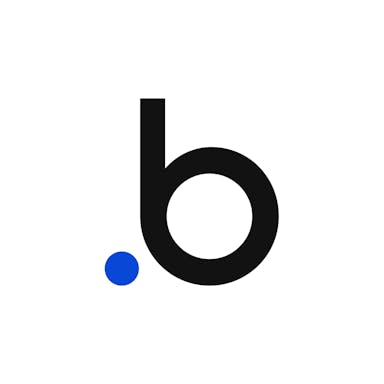Thesis
Over the first two decades of the 21st century, software has become one of the most valuable sectors in the global economy, with public software companies having reached over $13 trillion in market capitalization in August 2024. Yet despite the importance of software to business and innovation, building it has remained the task of highly-skilled developers, who are expensive and scarce. Demand for custom digital tools is projected to grow 22.6% across industries from 2025 to 2030, but there is already a shortfall in supply. As of 2021, the average company had a backlog of planned IT projects that ranged between three months and a year. No-code platforms, which enable non-technical users to build complex applications without writing code, significantly lowering the barrier to software development. have emerged to address this gap.
By 2025, 70% of new business applications are expected to be built using low-code or no-code technologies, up from less than 25% in 2020. These platforms can reduce app development time by up to 90% and cut costs by 60% compared to traditional methods. Moreover, non-technical “citizen developers” are projected to outnumber professional developers by a factor of four to one in 2025. As generative AI accelerates this trend, augmenting what non-technical users can build and how quickly they can build it, the combination of AI and no-code has the potential to enable a much broader population to turn ideas into software products than ever before.
Bubble, one of the first-ever no-code platforms for building sophisticated web and mobile applications, is positioned to capitalize on the demand for more accessible software development tools. Unlike more limited website builders or form-based no-code tools, Bubble’s drag-and-drop editor, extensible plugin system, scalable AWS-based backend, and flexible database architecture allow users to build applications that are dynamic, complex, and production-ready. By being early to market, Bubble has cultivated a thriving ecosystem of users, developers, and agencies. Its strength lies both in enabling rapid prototyping and in powering long-term, scalable businesses: 4.7 million applications have been built on Bubble as of August 2025, and its users have raised over $15 billion in funding with the help of its platform.
Founding Story

Source: Bubble
Bubble was founded in 2012 by Josh Haas (Co-CEO) and Emmanuel Straschnov (Co-CEO). The company began as an attempt to solve a clear and pervasive problem: the mismatch between the number of people who want to start software-based businesses and the relatively small number of people who know how to code.
Haas, a Harvard philosophy graduate, taught himself how to code as a teenager, when he built his own video games and even programmed AI components into a real-time strategy game called Solar Vengeance. Professionally, he spent time writing code in PHP, C, and Java, and during his time at Bridgewater Associates, he created a SharePoint-based tool that allowed non-technical coworkers to build custom software applications. That experience exposed him to a powerful insight: many smart, capable people had ideas for digital products, but lacked the technical skills to bring them to life. When Haas later joined CoFoundersLab, he realized “there was this huge mismatch between the number of engineers and the number of people who wanted to found companies”.
Straschnov brought a different but complementary background to the table. Born in France and having graduated from École Polytechnique, he had a foundation in science and technology, followed by an MBA from Harvard Business School. Before diving into the startup world, Straschnov had worked in consulting in China and in the luxury and fashion industries, but his growing interest in the software business led him to look for a more technical, product-oriented role.
Hass and Straschnov met through a mutual friend while Straschnov was at HBS. They had coffee on a Thursday and ended up talking for hours about broader views on technology and entrepreneurship. Straschnov had another job offer expiring the next day, but after seeing Haas’s early prototype, he signed on to co-found what would become Bubble.
For the first five years, the two co-founders bootstrapped the company with their savings, working out of coffee shops and WeWorks, and pitching anyone who would listen at meetups across New York City. They focused on slowly and methodically building a platform that was both powerful and flexible enough to enable non-technical users to build fully functional, scalable applications. In 2019, after nearly seven years of bootstrapping, Bubble raised its seed round, enabling the team to grow and support the growing community they had built around their product.
Product
Overview
Bubble is a full-stack, no-code development platform that empowers users spanning from solo founders to enterprise teams to build, launch, and scale robust web and mobile applications without writing traditional code. At its core, Bubble combines a visual programming environment with powerful backend capabilities, offering what it intends to be a seamless experience for designing UI, defining logic, managing data, and deploying apps. Taken together, Bubble offers the breadth and depth of traditional full-stack development within a more accessible and collaborative environment.
Bubble AI

Source: Bubble
Bubble AI is a generative feature that transforms written ideas into functional applications. Users describe their app concept in natural language, and Bubble generates a fully customized application complete with database schema, responsive design, and core workflows. Bubble also offers an extensive library of templates and components that can be instantly deployed and modified. The platform’s responsive engine ensures that apps render seamlessly across all devices, eliminating the complexity of managing cross-platform UI logic.
Design

Source: Bubble
In terms of design, Bubble’s drag-and-drop interface allows users to visually construct pixel-perfect layouts, similar to Figma, but with built-in functionality. Designers can either start from scratch, import designs from Figma, or leverage Bubble’s template libraries to rapidly prototype and customize UIs. Bubble AI also assists with design generation, automatically suggesting visuals and even sourcing images from Unsplash based on app context.
Data

Source: Bubble
On the data side, Bubble includes a fully integrated database system where users can define custom data types (e.g., Users, Orders, Posts), establish relationships, and query data at scale. This built-in database is optimized for growth, with fast search and record creation, even under heavy usage. Bubble also offers robust integrations with third-party services through its built-in API Connector, which makes it simple to connect with external tools like Stripe, Twilio, and OpenAI. For more advanced users, Bubble’s SQL Database Connector enables direct execution of SQL queries within the Bubble environment. This expands its utility for more complex enterprise-grade use cases.
Workflows

Source: Bubble
Bubble’s logic engine is one of its most important differentiators. Users can define detailed workflows, such as “When a user clicks a button → charge a payment → send a confirmation email”, without writing code. The logic layer supports conditional logic, real-time updates, backend workflows, and scheduled events. This makes it possible to build sophisticated business logic and real-world functionality entirely visually.
Security
Security and deployment are important features of Bubble’s product. Bubble is fully hosted and abstracts away infrastructure management entirely. Apps can be deployed with a single click and come with built-in authentication, including email/password and social logins. Bubble’s infrastructure is hosted on AWS and meets industry security standards, including SOC 2 Type II, GDPR, and ISO/IEC 27001. Data is encrypted in transit with TLS and at rest with AES-256 encryption. Additionally, Bubble apps are scanned against a number of security checks to proactively detect vulnerabilities.
Collaboration
To support modern development workflows, Bubble includes a robust version control system. Developers can work in branches, preview changes, and merge updates using a guided flow designed to minimize errors and improve collaboration. The platform also maintains a time-stamped history of changes, enabling teams to debug or roll back updates as needed. All deployments funnel through the Main branch, giving teams much-valued release governance.
Market
Customer
Bubble serves a broad customer base across four core segments: founders, developers, agencies, and enterprises. Each group brings distinct use cases but shares a common need: the ability to build sophisticated software without traditional engineering constraints.
Founders are among Bubble’s earliest and most passionate adopters. Non-technical entrepreneurs use Bubble to prototype, validate, and launch digital products without needing a technical co-founder or engineering team. The platform’s low barrier to entry makes it possible to build and iterate on MVPs at a fraction of the time and cost of traditional development. 35% of Bubble’s users come from startup backgrounds, including solo founders and early employees aiming to drive company growth. This user group relies on Bubble to build initial products, validate product-market fit, attract investors, and move from idea to market.
Developers use Bubble as a productivity multiplier. Professional developers turn to Bubble to streamline repetitive front-end and backend work, enabling them to focus on more strategic architecture, systems design, and integrations. In 2024, 64.3% of no-code users believed that most human developers would primarily use no-code solutions to create software applications by 2030. Agencies, meanwhile, use Bubble to deliver high-quality, custom applications to clients at a fraction of the cost and time. They benefit from Bubble’s flexibility, scalability, and robust plugin ecosystem.
Finally, Enterprises use Bubble to accelerate digital transformation and reduce IT backlogs. Non-traditional developers are increasingly building internal tools and automating workflows themselves instead of waiting on scarce engineering resources. Over 50% of medium to large enterprises are expected to adopt no-code/low-code platforms by 2027, and Bubble is positioning itself to be a key player in this shift.
Market Size
Bubble is situated within the no-code AI platform market, which was estimated to be worth $3.8 billion in 2023 and expected to reach $24 billion by 2030, representing a 30.6% CAGR. As of 2025, no-code platforms like Bubble are expected to account for over 65% of all application development activity.
This growth can be attributed to several factors. The global developer shortage has created an urgent need for tools that allow non-engineers to build software independently. Moreover, the digitization of SMBs and startups has dramatically increased demand for apps, marketplaces, and internal tools that can be launched quickly and affordably. Meanwhile, the rise of AI is accelerating the adoption of no-code platforms by making it even easier to generate, modify, and scale applications with minimal input.
Competition
Competitive Landscape
Bubble operates in the expanding no-code development market. It faces competition from traditional enterprise software providers, open-source tools, and the growing field of specialized no-code/low-code platforms. Traditional software vendors offer robust, feature-rich solutions, but they are typically expensive, slow to implement, and require extensive technical resources. In contrast, no-code/low-code platforms lower the barrier to entry by enabling non-technical users to build and deploy software faster and more affordably.
However, the market remains highly fragmented across three key axes: functionality, target user expertise, and product scope. In terms of functionality, platforms vary widely in what they enable users to build. Website builders like Wix, Squarespace, and Shopify focus on quickly creating websites or ecommerce stores. Application builders such as Bubble, FlutterFlow, and Softr allow users to build more sophisticated web and mobile apps with integrated backend logic and custom workflows. Database-oriented tools like Airtable and Ragic help users organize, manipulate, and automate data visually, though they often lack front-end or advanced logic capabilities.
The second axis is target user expertise. Some platforms cater to citizen developers and business users. Others, like Retool and Appsmith, are built for professional developers who want to accelerate development while retaining the ability to write code. Enterprise-focused platforms are often used by IT departments to rapidly build internal solutions and reduce traditional development overhead.
Finally, platforms differ in how much of the tech stack they cover. Some are front-end only (like Webflow), others specialize in backend or data-layer functionality (like Airtable), while only a few, including Bubble, offer an end-to-end solution. Bubble stands out by providing a full-stack platform that includes a visual front-end editor, workflow automation, backend logic, and integrated database management, all without code. In addition, its robust API and plugin ecosystem enhance extensibility, and its drag-and-drop editor makes sophisticated app development accessible to users without technical backgrounds.
Competitors
Retool: Founded in 2017, Retool is a developer-first platform for building custom internal tools quickly using a drag-and-drop interface and JavaScript. The platform is popular among engineering teams who want to accelerate development without sacrificing flexibility. While both Retool and Bubble enable rapid application development, Retool is optimized for internal tools and appeals more to technical users. In contrast, Bubble serves a broader range of use cases, including consumer-facing apps, and is more accessible to non-developers.
Retool has raised a total of $141 million in funding as of August 2025 from investors including Sequoia Capital, Y Combinator, Bond, SV Angel, and Elad Gil. It raised a $45 million Series C in 2022, led by Sequoia, which brought its valuation to $3.2 billion
Appsmith: Appsmith was founded in 2019 and offers an open-source, developer-focused low-code platform for building internal tools. The product is modular, extensible with JavaScript, and appeals to engineering teams who want to build fast while retaining fine-grained control. Though powerful, Appsmith is optimized for internal admin panels and dashboards. Bubble serves a wider audience, including non-technical users, and is designed for both internal and external-facing applications. Appsmith has raised $51.5 million in total funding as of August 2025, including a $41 million Series B led by Insight Partners in 2022, with additional backing from Accel, Canaan Partners, and Bessemer Venture Partners.
Betty Blocks: Founded in 2016, Betty Blocks is a Dutch no-code platform aimed primarily at enterprise and mid-market customers, with an emphasis on governance, compliance, and internal tooling. It enables “citizen developers” to build apps via a visual interface, often in coordination with IT teams. Compared to Bubble, it is more expensive and tailored to regulated industries, whereas Bubble is more flexible, affordable, and popular with startups, agencies, and SMBs. Betty Blocks has raised $36.5 million in total funding as of August 2025, including a $33 million round in 2021 led by SmartFin.
FlutterFlow: Founded in 2020, FlutterFlow is a low-code platform built on top of Google’s Flutter framework that allows developers to build mobile and web apps with a visual editor and export clean Flutter code. The platform’s mobile-first approach makes it an attractive option for teams focused on Android/iOS apps. On the other hand, Bubble is better suited for responsive web apps and complex backend workflows. While both platforms offer extensibility and developer-friendly features, they cater to different primary use cases: FlutterFlow for mobile, Bubble for full-stack web applications.
FlutterFlow has raised $28 million in total funding as of August 2025, including a $25.5 million Series A round in 2024 led by Google Ventures, with participation from Y Combinator and CRV.
Softr: Softr, founded in 2019, helps users build simple web applications on top of Airtable data. It is especially well-suited for beginners looking to quickly create lightweight internal tools, directories, or client portals. While Softr excels in ease of use, it lacks the workflow automation, logic depth, and full-stack capabilities of Bubble. As such, Softr is a better fit for MVPs and simple tools, while Bubble scales to more complex, feature-rich applications. The company has raised $15.7 million in total funding as of August 2025, including a $13.5 million Series A in 2022 led by FirstMark.
Business Model

Source: Bubble
Bubble’s business model centers around a SaaS model. It allows users to build and deploy web applications with varying levels of features and support based on their selected pricing tier. The platform is designed to be accessible, offering a free plan that enables users to experiment and build basic applications. However, access to more advanced capabilities, such as increased server capacity, custom domain support, premium plugins, and priority customer support, requires a paid subscription. Bubble’s tiered pricing structure caters to a broad spectrum of users, from individual makers and startup founders to established businesses and enterprise clients.
In addition to its core subscription revenue, Bubble generates income through its plugin and integration ecosystem. Users can purchase or subscribe to premium plugins, including payment processors, analytics tools, and API connectors that extend the platform’s functionality. Bubble also operates a marketplace for templates and third-party add-ons, which further monetizes its user base while enhancing the overall development experience.
For agencies and freelance developers, Bubble offers a specialized Agency Account designed to streamline the development and management of multiple client applications. This plan is priced at $78 per seat per month on an annual contract, or $85 per seat per month if billed monthly. It includes advanced collaboration tools, dedicated agency support, and enhanced management capabilities, enabling agencies to scale their client work more efficiently.
At the upper end of the market, Bubble offers a customizable Enterprise Account tailored to large organizations with complex needs around security, compliance, scalability, and integration with existing IT infrastructure. Enterprise pricing is bespoke and depends on the specific requirements of each customer, including user count, application scale, and support levels. This plan typically includes SLAs, SSO, dedicated account management, and advanced governance features.
Traction
As of August 2025, users have built 4.7 million applications on Bubble, collectively generating more than 5 billion page views annually. This level of engagement reflects the platform’s accessibility and its ability to support high-traffic, production-grade applications. Startups and businesses built on Bubble have raised more than $15 billion in funding as of August 2025, and its plugin and integration ecosystem has grown to over 6.5K entries.
This product usage is matched by revenue growth. Bubble reported $74.2 million in revenue in 2024, up from $50 million in 2023, $37 million in 2022, and $25.9 million in 2021. This represents a CAGR of nearly 42% over the three-year span, indicating strong customer retention, increasing willingness to pay for higher tiers and advanced features, driven by expanding adoption across diverse user segments.
Valuation
In July 2021, Bubble raised a $100 million Series A at an undisclosed valuation, which brought its total funding to $106.3 million. The round was led by Insight Partners, with participation from existing investors such as SignalFire, Neo, BoxGroup, and ThirdKind, along with new investors like Betaworks and notable angel investors, including the founders of Datadog, Peloton, and Hootsuite.
Prior to this funding, Bubble had been bootstrapped for seven years, relying solely on revenue generated from its platform. In June 2019, the company raised a $6.5 million seed round. The Series A round was intended to enhance the platform's scalability, support startups from MVP to IPO, and expand educational initiatives aimed at empowering customers to build web platforms affordably.
Key Opportunities
AI Integration
The no-code space is rapidly evolving to integrate AI and machine learning capabilities that streamline development and augment application functionality. Platforms are already embedding generative AI to assist with layout design, automate workflows, and enable predictive behavior in applications. Bubble is well-positioned to capitalize on this shift by incorporating AI-powered features into its platform, such as natural language app generation, intelligent data modeling, and predictive analytics.
These capabilities would enhance developer productivity and also allow non-technical users to build smarter, more adaptive applications. Intelligent automation is one of the top emerging differentiators for no-code tools. By embracing this trend, Bubble can further its mission to democratize access to advanced technology and establish itself as the leading AI-integrated no-code platform.
SMB Digitalization and SaaS Proliferation
SMBs represent a vast, underserved segment of the global software market. Nearly 70% of SMBs worldwide still operated without customized software solutions as of February 2023, largely due to the high cost and complexity of traditional development. While SaaS has made software more accessible, many SMBs still struggle with rigid workflows and one-size-fits-all products.
Bubble already supports thousands of SMB use cases from internal tools and client portals to multi-vendor marketplaces and is uniquely equipped to address this gap. Its low-cost, flexible platform empowers SMBs to build tailored applications without the need for full-time engineering teams or expensive custom development. As the broader SaaS ecosystem matures, Bubble has the opportunity to become the go-to platform for SMBs seeking affordable, scalable, and customized digital solutions.
Decentralization and Compliance
The way software is built within organizations is undergoing a structural transformation. By 2025, 70% of new custom applications will be developed outside of formal IT departments, driven by the rise of “citizen developers” and the decentralization of tech ownership within companies. At the same time, regulatory complexity is increasing across industries, especially in sectors like healthcare, finance, and education.
This dual trend of decentralized development and heightened compliance pressure creates a need for secure, user-friendly no-code platforms. Bubble’s focus on access control, data privacy, and scalability makes it particularly attractive to business units that need to build software quickly without sacrificing governance or regulatory compliance. As organizations seek agility without losing control, Bubble can position itself as the trusted standard for compliant no-code development across teams and industries.
Key Risks
Vendor Lock-In and Lack of Code Portability
One of the most significant concerns among current and prospective users is Bubble’s proprietary infrastructure and the inability to export source code. Applications built on Bubble are tightly coupled to its platform, meaning customers cannot easily migrate to other environments without rebuilding their apps from scratch. This lack of portability presents a long-term flexibility risk for users, particularly businesses with evolving technical needs, stringent data residency requirements, or regulatory obligations around code ownership.
While the trade-off enables Bubble to offer a fully integrated, full-stack development environment, it limits the platform’s appeal among more technically sophisticated users or enterprise buyers who prioritize future-proofing and data sovereignty. As customers grow and their infrastructure requirements become more complex, this lock-in could increase churn risk or cap Bubble’s penetration into larger accounts.
Performance Constraints
Bubble has a history of outages and downtime, which have disrupted live customer applications and could result in financial losses for affected businesses. These incidents highlight the inherent risk of centralized infrastructure in no-code platforms, especially when customers lack the control or visibility to independently diagnose and resolve issues. In addition to availability concerns, performance limitations remain a challenge for certain use cases. Bubble has struggled with high-volume, latency-sensitive, or real-time applications such as trading platforms, live multiplayer environments, or apps with millions of concurrent users.
If these technical challenges are not addressed, Bubble risks being perceived as a tool for early-stage or internal MVPs rather than a long-term solution for mission-critical software. This perception could limit its total addressable market and open the door for more performant or export-friendly competitors to erode its customer base.
Summary
Bubble operates in the expanding no-code/low-code application development market, which is being driven by increased demand for custom software among non-technical users, especially within SMBs and business units outside of IT. The platform distinguishes itself with a full-stack visual programming environment, allowing users to build complex, production-grade web applications without writing code. With over 4.6 million apps built and $74.2 million in 2024 revenue, Bubble has demonstrated user engagement. Its SaaS-based business model is complemented by monetization through plugins, templates, and specialized plans for agencies and enterprises. The company has raised $106.3 million in total funding as of August 2025, including a $100 million Series A led by Insight Partners.
Bubble is well-positioned to benefit from ongoing trends in AI integration, SMB digitalization, and decentralized software development. Embedding AI-driven automation and expanding into regulated or high-compliance industries represent meaningful areas for growth. However, significant risks remain around platform lock-in, performance at scale, and reliability. Key open questions include whether Bubble can improve scalability, support more flexible deployment options, and remain competitive in a rapidly evolving ecosystem of no-code tools enhanced by AI.




